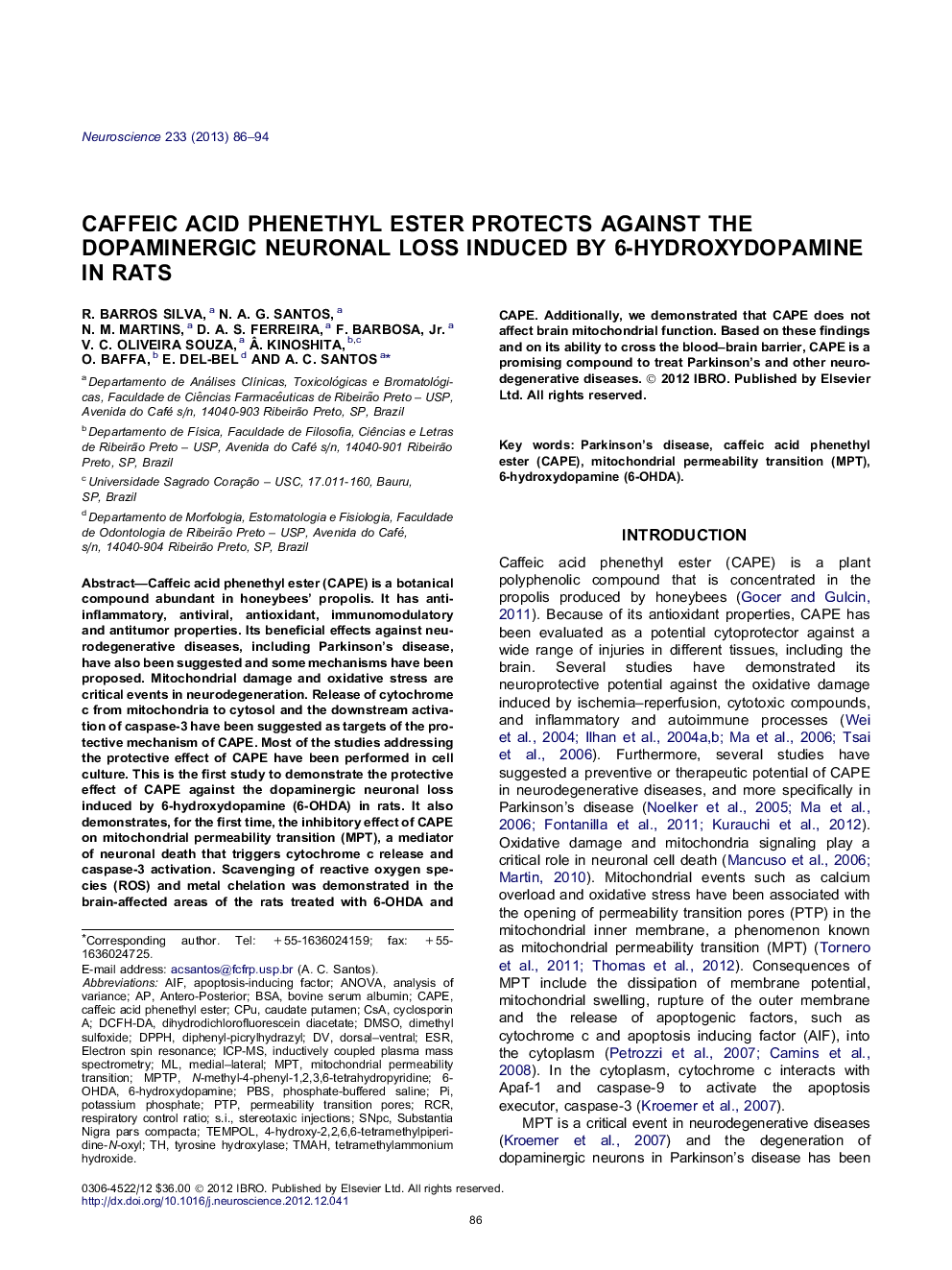| Article ID | Journal | Published Year | Pages | File Type |
|---|---|---|---|---|
| 4338069 | Neuroscience | 2013 | 9 Pages |
Caffeic acid phenethyl ester (CAPE) is a botanical compound abundant in honeybees’ propolis. It has anti-inflammatory, antiviral, antioxidant, immunomodulatory and antitumor properties. Its beneficial effects against neurodegenerative diseases, including Parkinson’s disease, have also been suggested and some mechanisms have been proposed. Mitochondrial damage and oxidative stress are critical events in neurodegeneration. Release of cytochrome c from mitochondria to cytosol and the downstream activation of caspase-3 have been suggested as targets of the protective mechanism of CAPE. Most of the studies addressing the protective effect of CAPE have been performed in cell culture. This is the first study to demonstrate the protective effect of CAPE against the dopaminergic neuronal loss induced by 6-hydroxydopamine (6-OHDA) in rats. It also demonstrates, for the first time, the inhibitory effect of CAPE on mitochondrial permeability transition (MPT), a mediator of neuronal death that triggers cytochrome c release and caspase-3 activation. Scavenging of reactive oxygen species (ROS) and metal chelation was demonstrated in the brain-affected areas of the rats treated with 6-OHDA and CAPE. Additionally, we demonstrated that CAPE does not affect brain mitochondrial function. Based on these findings and on its ability to cross the blood–brain barrier, CAPE is a promising compound to treat Parkinson’s and other neurodegenerative diseases.
► CAPE protects against the dopaminergic neuronal loss induced by 6-OHDA in rats. ► This is the first study to show the protection against 6-OHDA neurotoxicity in vivo. ► The mechanism involves ROS scavenging, metals chelation and MPT inhibition. ► CAPE does not affect mitochondrial calcium homeostasis. ► CAPE does not cause mitochondrial dysfunction.
